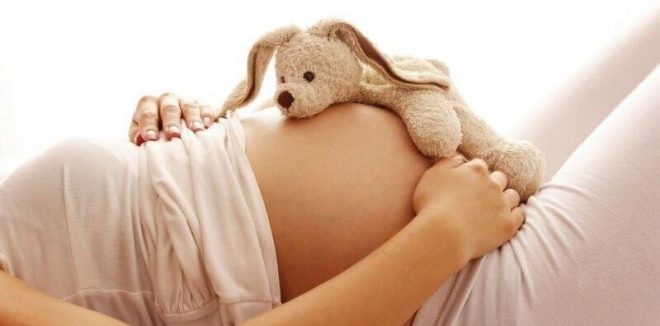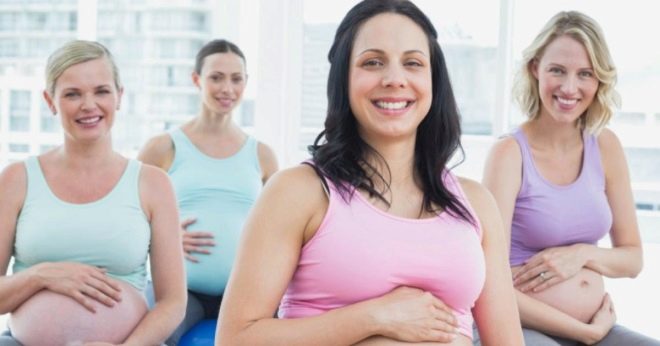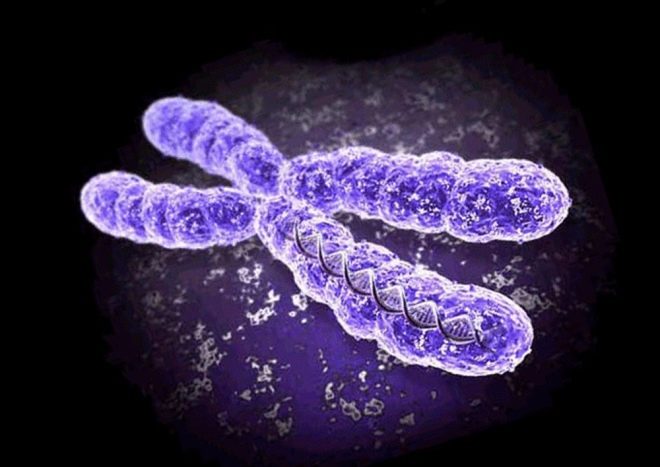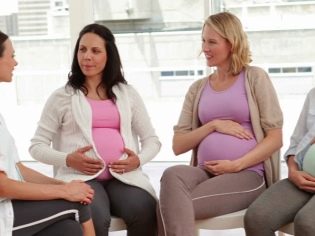Features of the first birth after 30 years
Pregnancy firstborn after 30 years - today is not uncommon. Many women deliberately postpone childbearing for a more favorable time, when they complete their studies, there will be a stable job, housing will appear. However, the first birth after thirty have their own characteristics, and it is better to learn about them in advance in order to reasonably weigh all the risks and benefits when solving family planning issues.
Late or just right - the opinion of doctors
The idea of society and doctors about late childbirth changed several times. At first, the age of 20–22 years was considered the normal term for the birth of a first-born child, and 25-year-old girls who came to register for pregnancy for the first time were considered to be congenital.
In the early 90s of the twentieth century, women who were decided to give birth to their first child at the age of 27–28 years were counted among the number of old-born. A little later, it was believed that childbirth after 30 years is a late birth. But life does not stand still; women change their social status, strive to make a career, get a decent education, find a good job, and therefore the dates of birth of the firstborn are again postponed. Today, a thirty-year-old woman who is going to give birth to her first child will not be surprised to see. This is a common situation.
Doctors in Russia consider women with late growth to come for their firstborn after 36 years.
The age rating of the category of women in labor exists “by old memory” only in our country. Nowhere in the world are there any more divisions of pregnant women and parturients into categories by age, and therefore neither women who become pregnant for the first time at 37-38 years old, nor those who come to the clinic for their first child at 41-42 years, are considered late-forming.
Nevertheless, doctors around the world recognize that with age, pregnancy and childbirth still acquire their own characteristics. But these features are connected not so much with the woman herself, but with the problems and changes in the body that she acquired over the years, because after 30 years, some chronic extragenital and gynecological diseases are often the first time.
However, after 30 years the risks are significantly lower than after 40 years. And in most cases, pregnancy proceeds well and ends with the birth of a healthy and beautiful baby to the joy of mom and dad.
It is dangerous to give birth after 30 years, you can answer only in each case, knowing the exact history of the woman, her living conditions, social and living conditions, genetic characteristics and predisposition.
Possible hazards and risks
The calendar age of the pregnant and the parturient woman does not solve much in terms of assessing possible risks. More important is the conditions in which she lives, what her lifestyle is, whether there are bad habits, chronic diseases. Often, after 30 years, for the first time chronic diseases, which had previously been “dozing”, become acute. And the provocative factor may be pregnancy, since carrying a fetus is hard work for all organs and systems of the female body.
The only aspect that has a definite relation to age concerns the calculated baseline risks of having a baby with chromosomal abnormalities. For example, the most common Down syndrome in the world (trisomy 21) may be due to age. A woman at 25 years old has a chance of having a baby with such a diagnosis of no more than 1: 1500. And at 30, the risk increases and, according to medical statistics, it is already 1: 1000. At 34, a woman has a risk of giving birth to a “sunny” baby 1: 350.At 35–36 years, the baseline risk is even higher - 1: 214. After 40 years, the risks are high at all: 1: 19 to 40 years and 1: 14 to 43 years.
Somewhat increased after 30 years and the risk of having a baby with Edwards and Turner's syndromes. This is due to the fact that the stock of female eggs over time depletes, and the quality of genetic material, which is laid in the germ cells of men and women, under the influence of environmental conditions, bad habits worsens.
This somewhat complicates conception itself, and also increases the likelihood of an “incorrect, erroneous” fusion of spermatozoon and oocyte, as a result of which one of trisomy or other incurable chromosomal abnormalities will arise, which for the most part make a full life impossible, and also lead to early death.
A woman’s obstetric history is very important in predicting the nature of pregnancy and childbirth. Thirty to forty years is the age to which a woman usually has one or several abortions in her personal obstetric history, there are inflammatory diseases of the reproductive system in the past, menstrual disorders, a woman used hormonal drugs for contraception. All this somehow can affect not only the characteristics of gestation, but also the nature of the flow of labor.
The probability of conceiving twins after 30 years is slightly increased, but not as much as after 40 years.
Quite often, women are worried that a cesarean section will be necessary for them due to their age. Among the indications provided by the Ministry of Health for this operation, the age of the woman in labor is not listed separately. But there may be other indications that develop against the background of age and other factors.
Doctors believe that childbirth after 37 years is safer and smarter to carry out precisely by cesarean section, especially if there are aggravating factors. Clinical recommendations of the Ministry of Health of the Russian Federation indicate such a possibility with the consent of the mother herself and the presence of concomitant pathologies that may pose a danger to her life and the life of the baby during natural childbirth.
If the pregnancy proceeds well, then the woman after thirty is usually allowed to give birth on her own, and the childbirth, though with some peculiarities, most often passes quite safely.
The generic process itself after 35–36 years may be complicated by the likelihood of premature placental abruption, as well as early discharge of water. Both of these factors greatly complicate childbirth. In case of detachment, emergency caesarean section is performed immediately. During the discharge of waters, physiological labor can be resolved or stimulated.
At birth, primiparous people over the age of 35 often suffer from ruptures of the cervix, perineum, they are more often carried out with an episiotomy (dissection of the perineum in order to avoid spontaneous rupture). The higher the risk of bleeding. Due to the fact that the muscle tissues are not as “young” as those of twenty years old, postpartum complications occur more often, for example, the uterus is reduced after delivery.
The onset of labor may also be abnormal. In aged women giving birth, weakness of labor forces is more often recorded, especially if the first birth. The situation may require emergency cesarean section in the absence of the effect of stimulation of labor with medicines.
To be fair, it should be noted that all the listed risks are encountered in practice not so often. Yes, a woman who, in her “over thirty” decided to give birth to a first-born child, should be aware of possible complications, but there is no reason to be frightened and refuse the prospect of becoming a mother. Most of these risks exist in young women in labor, and this in no way prevents either them or the ladies “in 30 and 35” from giving birth to healthy, long-awaited and beloved sons and daughters.
To give birth to a healthy child, you need to know about the risks and do everything that the attending physician requires in order to minimize them.
Benefits
Pregnancy after 30 years is usually not accidental, unplanned.A woman is at an age when the subtleties of contraception are well known to her; there is an impressive experience of sexual life. After 30, 35 years, women usually come to the consultation with their eyes shining with delight, who finally “matured” to motherhood and conceived the desired child. Even if a pregnant woman does not have a husband and a permanent sexual partner, pregnancy at this age less often causes the desire to get rid of the baby, to have an abortion, even if it was not planned.
Gynecological hospitals, where they interrupt pregnancy, more often take girls under 30 years old, pregnant for the first time, to terminate a pregnancy at will, than women who first became pregnant aged 30 and older.
The fact that the baby is still desired, and the decision to become a conscious mother, changes a lot. Women are more relaxed in the process of carrying a child. They are not worried about the fact that they have nowhere to live, there is no money, because by this age there is already work, some kind of housing, education. Women who realize that there are certain age-related risks, are more sensitive to the recommendations of doctors, they strictly observe them and attend all scheduled receptions in the consultation, responsibly treat tests and prenatal screenings.
Psychologically, women are more mature, and therefore they prepare for childbirth in detail: they attend courses of expectant mothers, master breathing techniques, and learn the finer points of caring for newborns.
At this age, by the way, according to statistics, postnatal (postpartum) depression develops less frequently. At the risk of its occurrence more often are young women in labor, as well as women after 40 years.
First-born, born mom after 30 years, surrounded by attention, care and love. They are given more time. Children bring a new, previously unexplored feeling of happiness and self-realization in the field of motherhood to the life of a thirty-year-old woman.
Child psychologists say that as a result, the relationship between the parents and the child is formed more trusting and warm, if the parents are more than thirty years old at the time of the appearance of the crumbs.
How are they going?
The very course of natural childbirth at this age is not much different from childbirth at any other age.
But for a woman who gives birth for the first time after thirty, it should be remembered that all stages of labor can last longer. Convulsions usually in nulliparous at this age last up to 10-12 hours, cervical dilatation is more slow. Attempts take up to an hour, the birth of the placenta - up to 40 minutes.
Much during labor will depend on the presence or absence of complications.
Reviews
Women who gave birth for the first time after 30 years, argue that, even if pregnancy and childbirth proceeded well, their health is usually impaired after them: the condition of the hair and teeth worsens, chronic illnesses appear, which the newly made mother had not even suspected before.
Most write on the thematic forums that the pregnancy did not come from the first attempt, there were problems during the planning, for a long time it was not possible to conceive a baby. But most of them say that childbirth proceeded normally, and children were born healthy and in time.
Often, women describe that because of their age, they had to be tested more often, because doctors were “reinsured”, but no one regrets that he decided to give birth after thirty.
For more information on first birth after 30 years, see the following video.


























